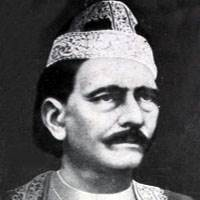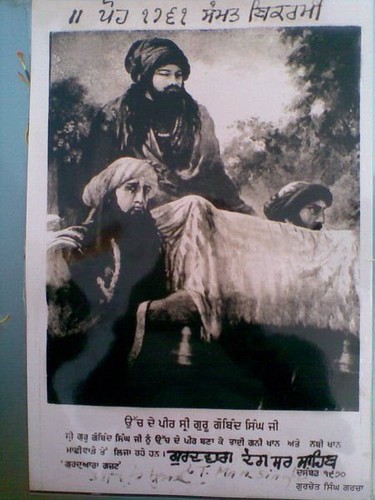
An Old Picture depicting as to why Fakirs and sanyasis revolted.
Dr.Mazhar Naqvi
Once again India celebrated its 68th Republic
Day with great pomp and show without remembering Fakir Majnu Shah. Despite his
status as the first martyr of India’s struggle for freedom, his name did not
figure at all in the speeches delivered at functions held all over the country
to mark the day. He deserves glowing tributes on each Republic and Independence
Day of India in view of his untiring efforts to uproot the British from Indian
soil after the ‘Battle of Plassy’ in 1757.His martyrdom needs to be recalled
specially on January26, the Republic Day of India, for Majnu Shah had succumbed
to his injuries suffered at the hands of British on this day. It is
unfortunate, he is never remembered in India and no one offers even floral
tributes at his grave or Kothri in Makanpur, the headquarters of Madariya Sufi
order near Kanpur City of India. It is only handful of locals who keep remember
him orally but they too are not aware that he had died on January 26 in
1888/1889.
Majnu Shah was a fakir of Madariya
Sufi order and he belonged to Deewanagan school of the cult. He was a wandering
Malang and took up arms against the British when they interfered with the
religious rights of fakirs and sanyasis. He revolted when East India Company
officials put a ban on the collection of donation or money by fakir and
sanyasis from the people after victory at Plassy. Soon he gathered enough
support to attack British establishments .Backed by support of both fakirs and
sanyasis, he challenged the might of British empire in Bihar,Bengal,Oddisha and
Assam. He however suffered a bullet injury in the battle of Mehsangarh in
December 1887 but managed to escape to Makanpur where he died on January
26,according to a report of British Official.
Majnu Shah's real name was Abu Talib and he was a great devotee of Panjatan. He used to carry an 'Alam'(Standard) with Panja (Palm like)affixed on the top.He drew inspiration to oppose the persecution of the British from the life of Hazrat Imam Hussain. Throughout his life,he performed Taziadari and considered himself as slave of Bibi Zainab and Imam Zainul Abedeen. His outlook was very secular and personality charismatic.Due to this, he was able to garner active support from non-Muslims for his crusade.
Apart from Majnu Shah, scores of
freedom fighters still remain unsung in India. They are unknown to their own
countrymen as there has not been adequate research on the subject. In case of Majnu
Shah, even Bangladesh and Pakistan governments also need to do justice with the
martyr, for he had fought against the British when India also included both the
nations. Bangladesh has reportedly named a bridge after Majnu Shah but Pakistan
has not yet acknowledged Majnu Shah’s role in freedom movement in any manner. The
blogger urges the government of India, Pakistan and Bangladesh to initiate
immediate steps to ensure what is due to Majnu Shah as the first martyr of
freedom movement in Indian sub-continent.( References available on request.
Photo Courtesy-Google Images)


